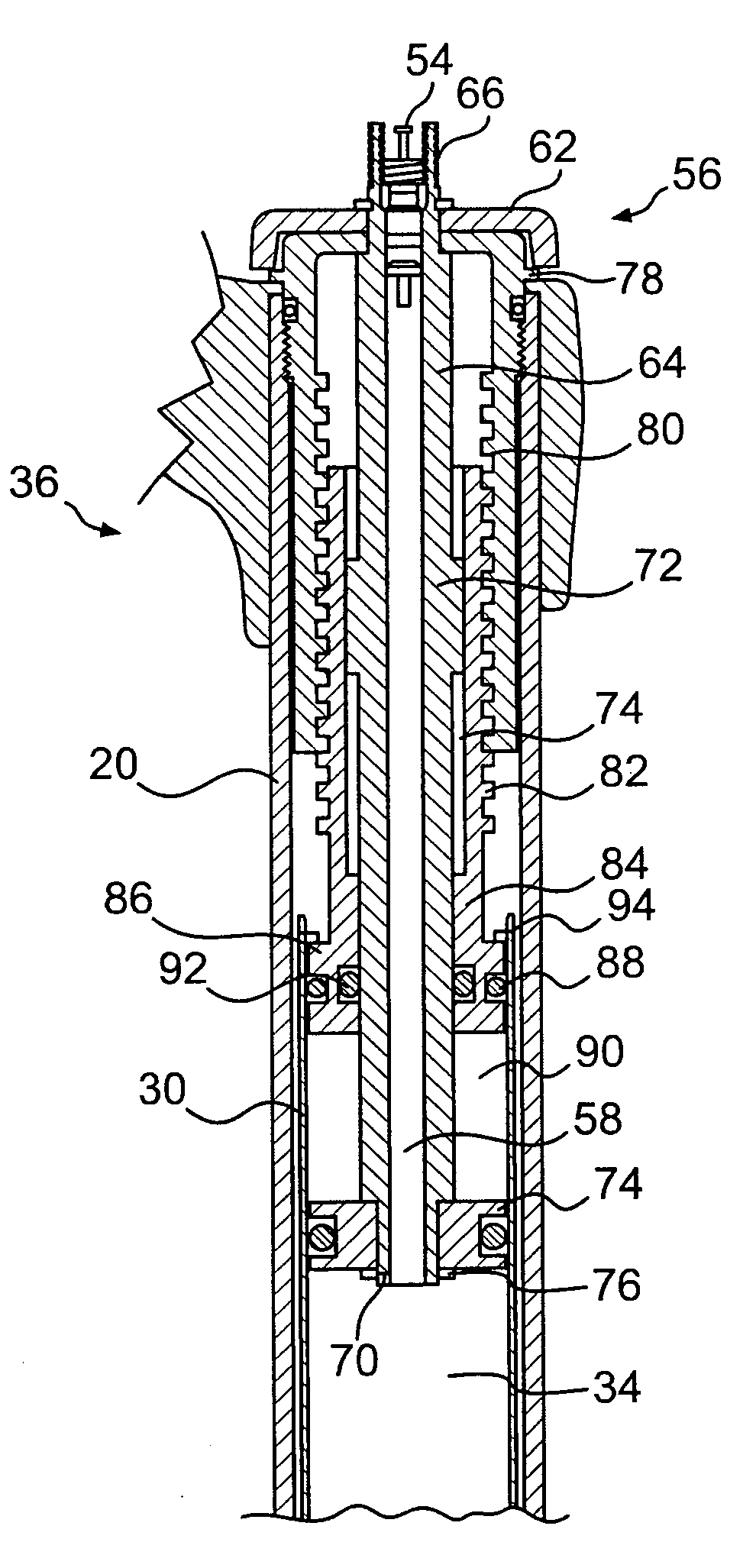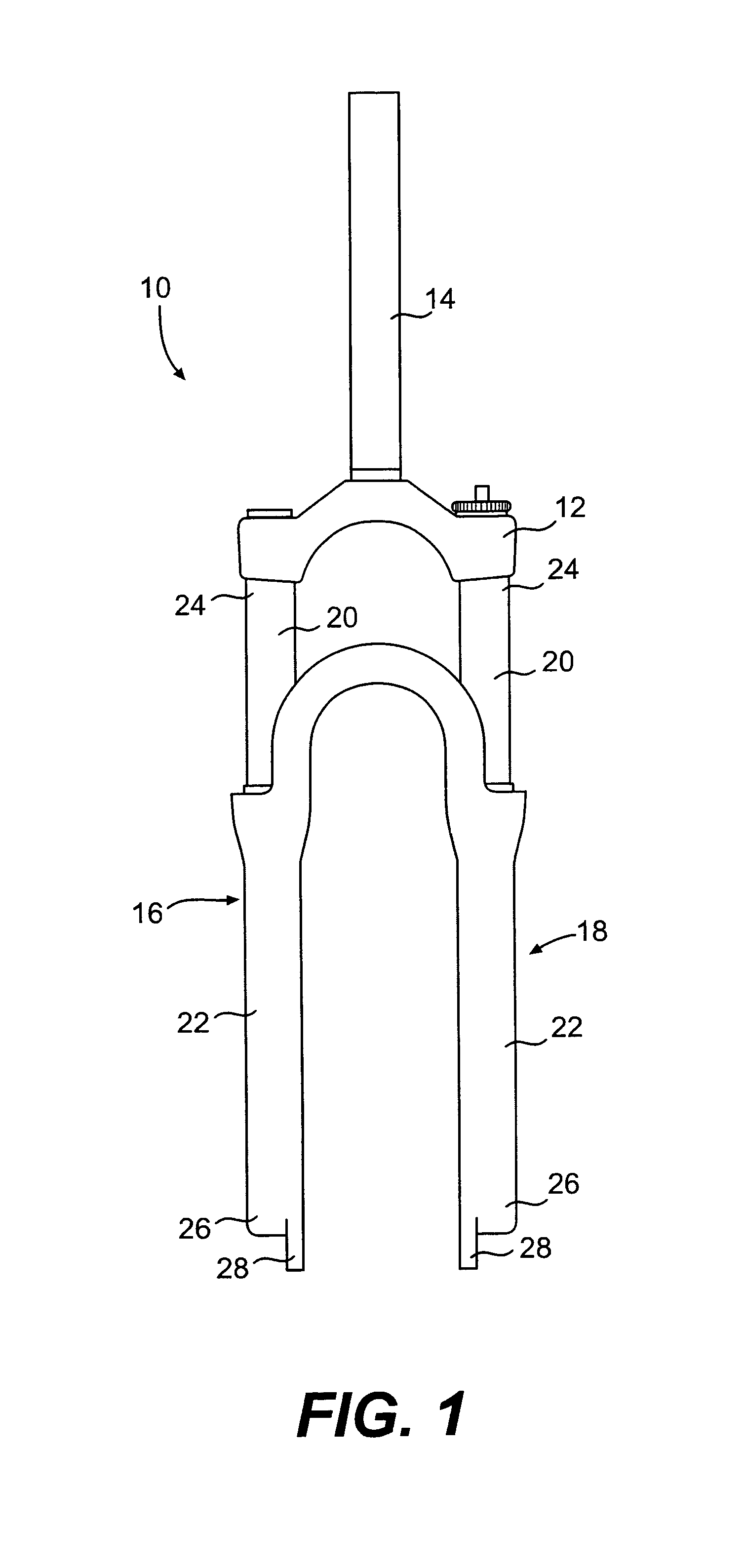Adjustable gas spring suspension system
a technology of gas springs and suspension systems, which is applied in the direction of shock absorbers, steering devices, cycle equipments, etc., can solve the problems of unnecessarily heavy, cumbersome riding of forks with longer travel, and increased travel requirements, so as to reduce travel, softer spring rate, and the effect of reducing travel
- Summary
- Abstract
- Description
- Claims
- Application Information
AI Technical Summary
Benefits of technology
Problems solved by technology
Method used
Image
Examples
Embodiment Construction
[0021]FIGS. 1–9 illustrate a bicycle front suspension fork 10 that includes a gas spring suspension system 11 in accordance with one embodiment of the present invention. However, a gas spring suspension system according to the present invention may be used in a rear shock, a seat post, or at other locations on a bicycle frame. Likewise, the gas spring suspension of the present invention may be used on motorcycles as well as other handlebar-steered vehicles. Looking to FIG. 1, the bicycle front suspension fork 10 includes a crown 12 that is connected to a steerer tube 14, a first leg 16 and a second leg 18. Each of the legs 16, 18 include an upper tube 20 and a lower tube 22. Although the upper tubes 20 are shown as inner tubes slidable within the lower outer tubes 22, it will be appreciated that the lower tubes may alternatively be reconfigured as inner tubes slidable within the reconfigured outer tubes. Additionally, although the tubes 20, 22 are shown to have substantially circula...
PUM
 Login to View More
Login to View More Abstract
Description
Claims
Application Information
 Login to View More
Login to View More - R&D
- Intellectual Property
- Life Sciences
- Materials
- Tech Scout
- Unparalleled Data Quality
- Higher Quality Content
- 60% Fewer Hallucinations
Browse by: Latest US Patents, China's latest patents, Technical Efficacy Thesaurus, Application Domain, Technology Topic, Popular Technical Reports.
© 2025 PatSnap. All rights reserved.Legal|Privacy policy|Modern Slavery Act Transparency Statement|Sitemap|About US| Contact US: help@patsnap.com



